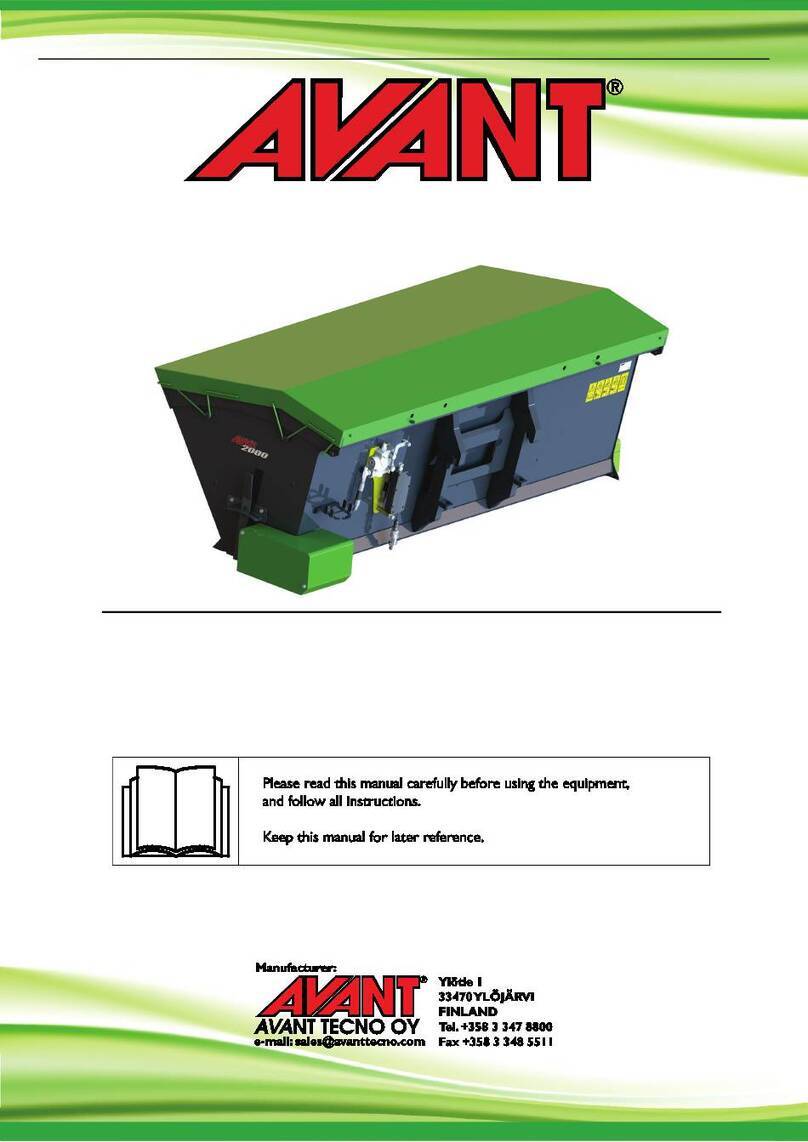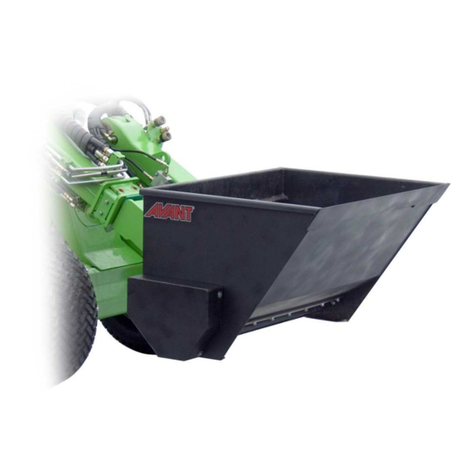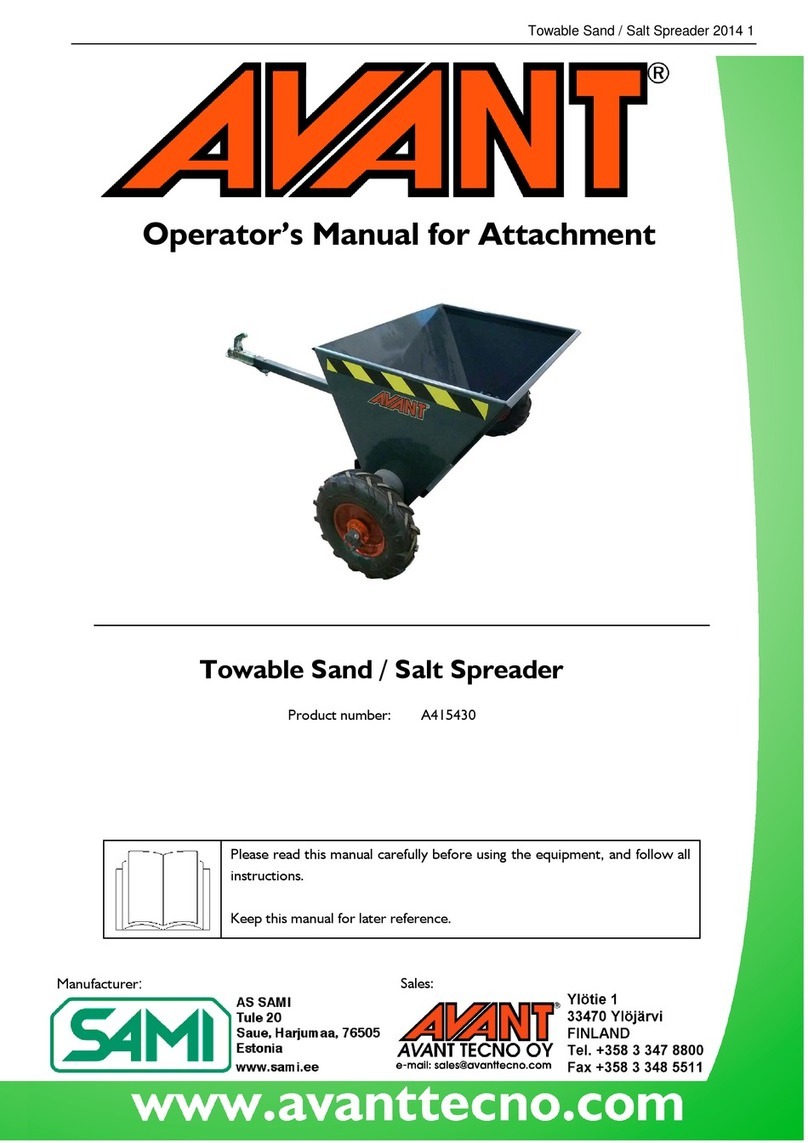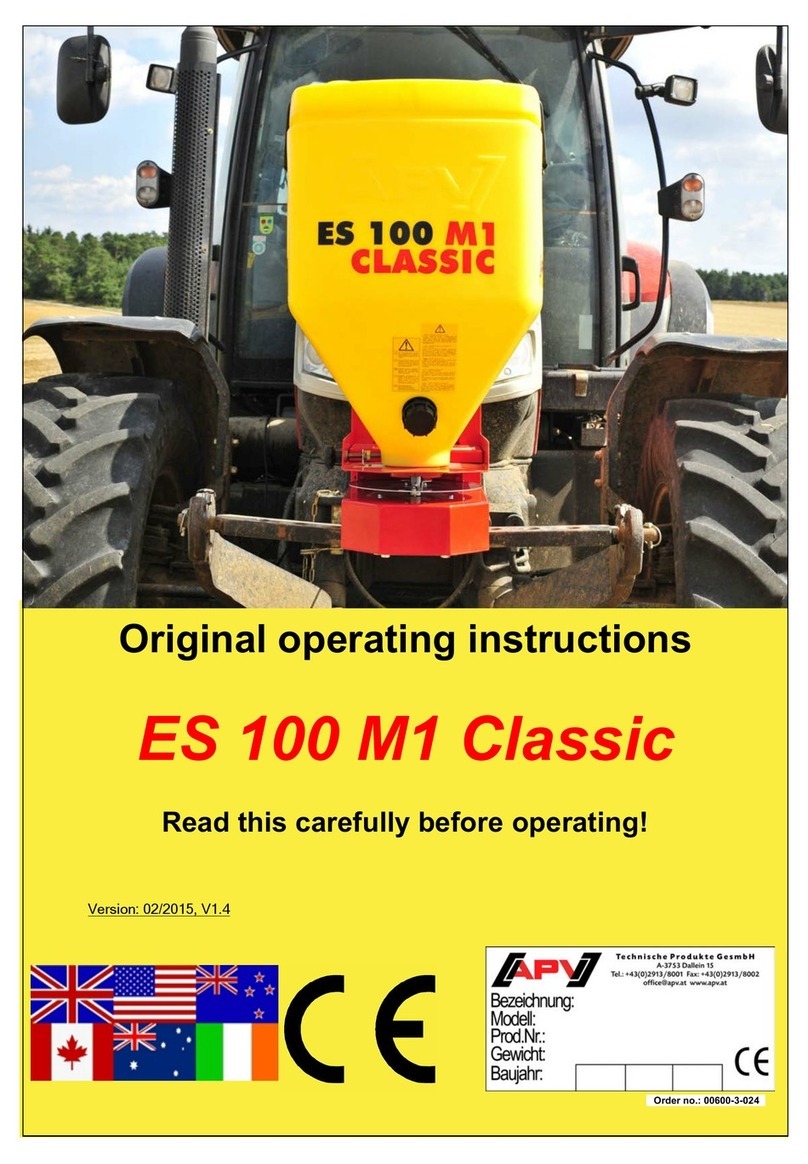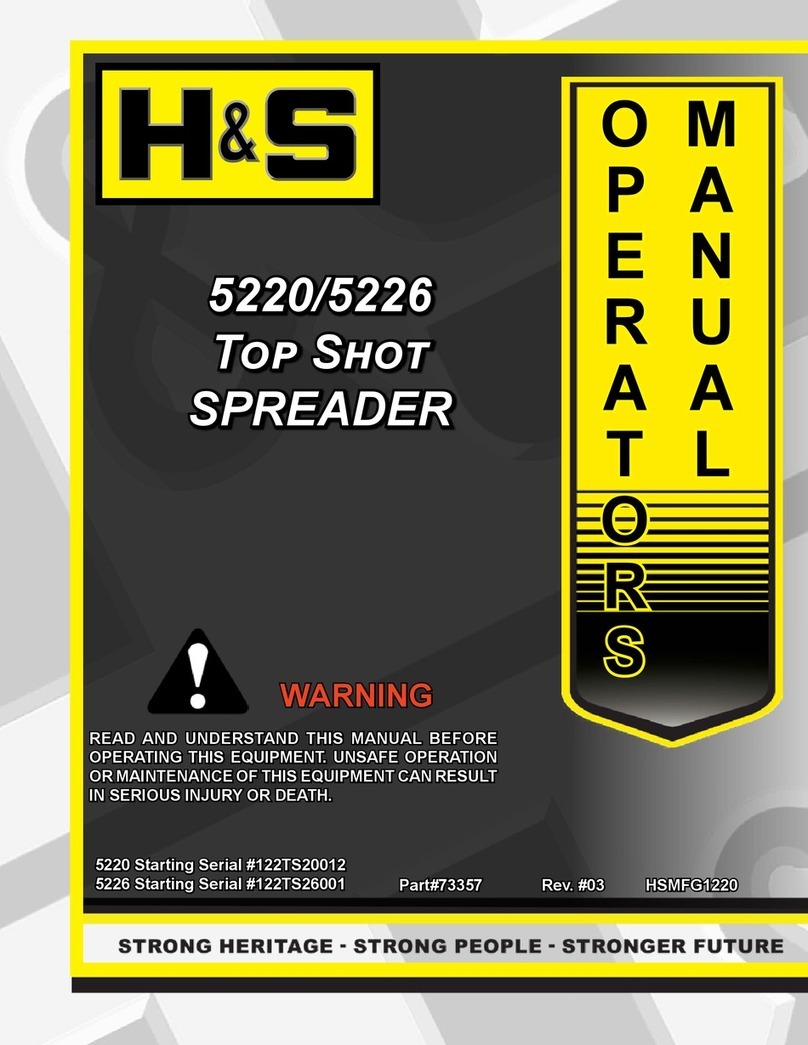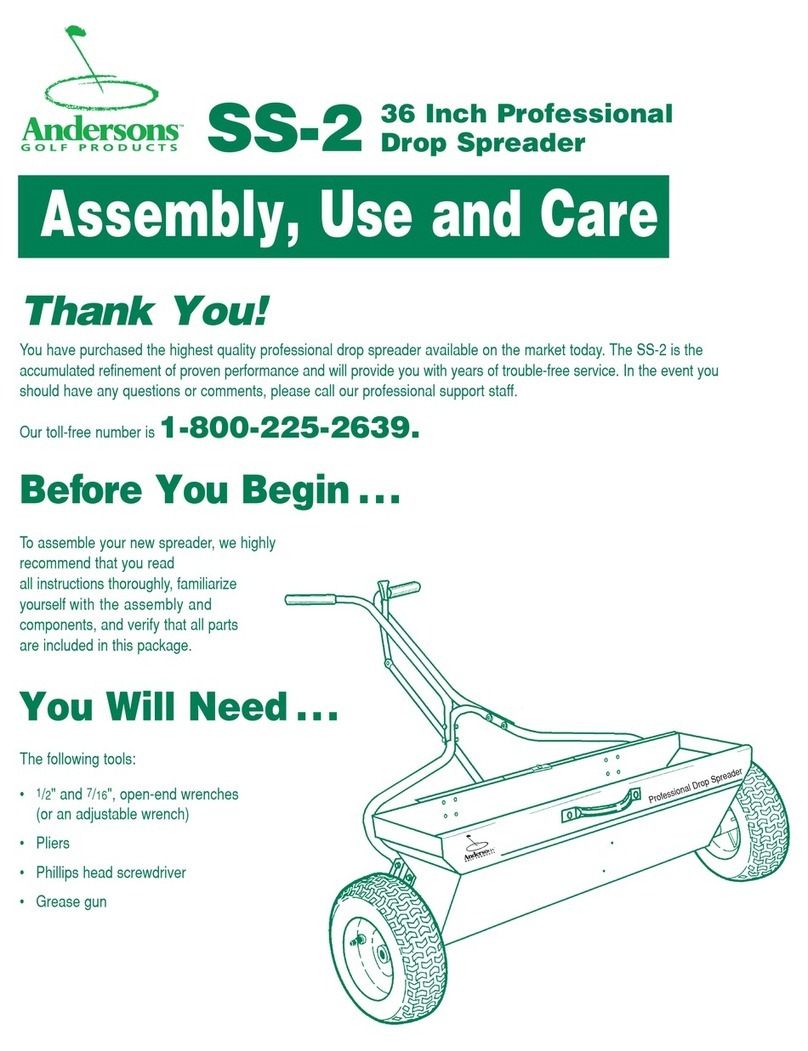
6(12)
3. Safety instructions for using the sand spreader
Please bear in mind that safety is the result of several factors. The loader-attachment combination is highly
powerful, and improper or careless use may cause serious personal injury or property damage. Due to this,
you should carefully familiarise yourself with the manuals of both the loader and the attachment before
starting operation. Do not use the attachment if you have not familiarised yourself with its operation and the
related hazards.
Misuse, careless use, or using an attachment that is in bad condition may cause
serious injuries. Familiarise yourself with the controls of the loader and coupling and
safe operation of the attachment at a safe area. Become familiar especially with how
to stop the equipment in a safe manner. Read the following safety precautions
carefully.
Read all safety instructions carefully before handling the attachment
•When attaching the attachment to the loader, ensure that the locking pins of
the loader's quick attach plate are positively in the lower position and that
they have locked the attachment to the loader.
•The Sand Spreader is to be used by one person at a time. Do not go near a
running attachment or allow others to approach the area where the machine is in
operation.
•Never leave the driver’s seat when the spreader is running or when the auxiliary
hydraulics control lever of the loader is locked on. Keep a safety distance of at
least one metre between activated sand spreader and any person in vicinity.
•Make sure that an uncoupled attachment is properly supported. Unmount the
spreader carefully and use the support stands of the spreader. Ensure that the
spreader is adequately supported during all maintenance, service, or adjustment
tasks.
•Keep hands and feet away from moving parts. Beware of entanglement hazard of
a running spreader. Any inspection, cleaning, or clearing of blockages must be
done carefully. Always stop the attachment following the safe stopping procedure
before reaching inside the spreader.
•Stop the spreader and shut down loader engine when filling the spreader.
•Always transport the spreader as low and close to the machine as possible to
keep the centre of gravity low and for the best stability. On slippery areas drive
calmly and deliberately. Operate the controls of the loader slowly and smoothly
especially on inclined surfaces.
•If mounted on the loader boom or rear lift device, lower the attachment firmly on
the ground before leaving the driver’s seat. Make sure that the attachment is
properly supported during maintenance or inspections. Set the outriggers of the
attachment always when unmounting the attachment from the loader. Never
leave the driver’s seat when the attachment is lifted. Going under a raised
attachment or loader boom is dangerous, as the boom may lower due to loss of
stability, mechanical fault or by other person operating the controls of the loader.
•Follow safe stopping procedure before any maintenance or adjustments. Before
clearing blockages, the attachment must always be stopped following safe
stopping procedure, to prevent unintended starting or moving of the spreader
once the blockage has been cleared.






